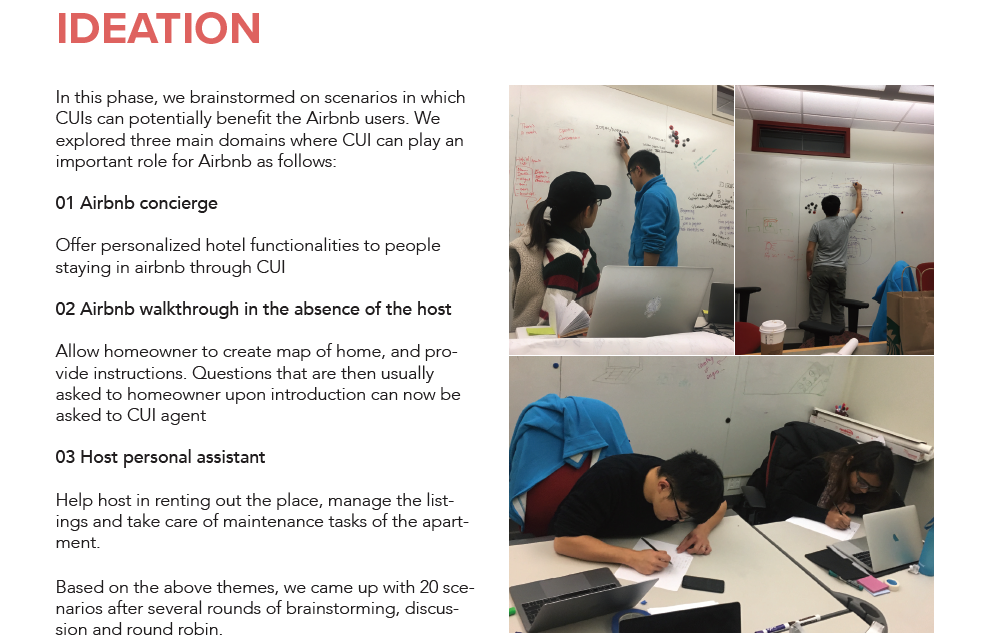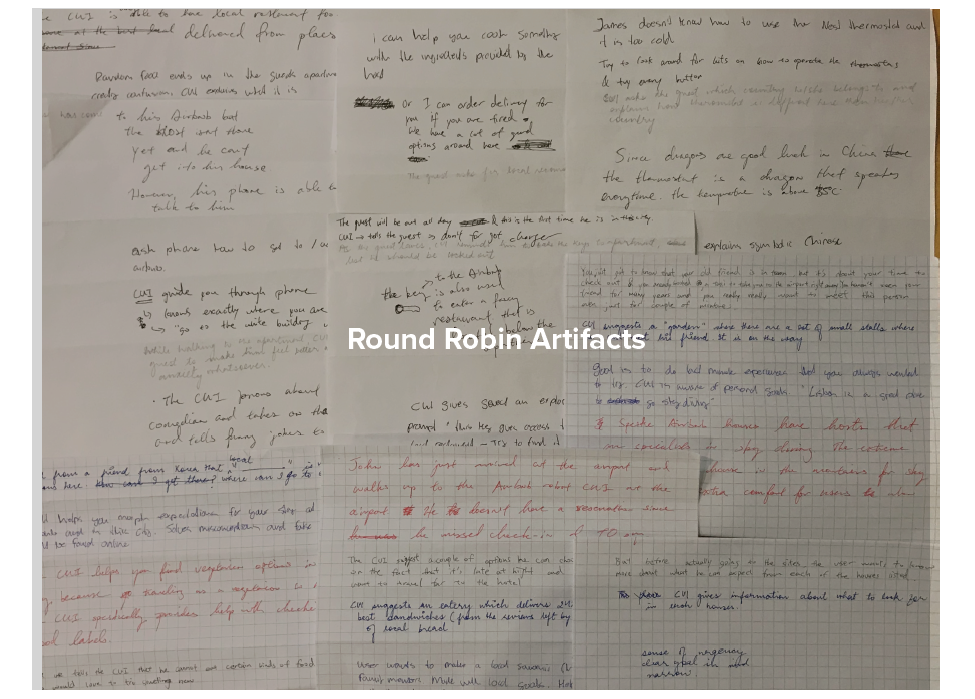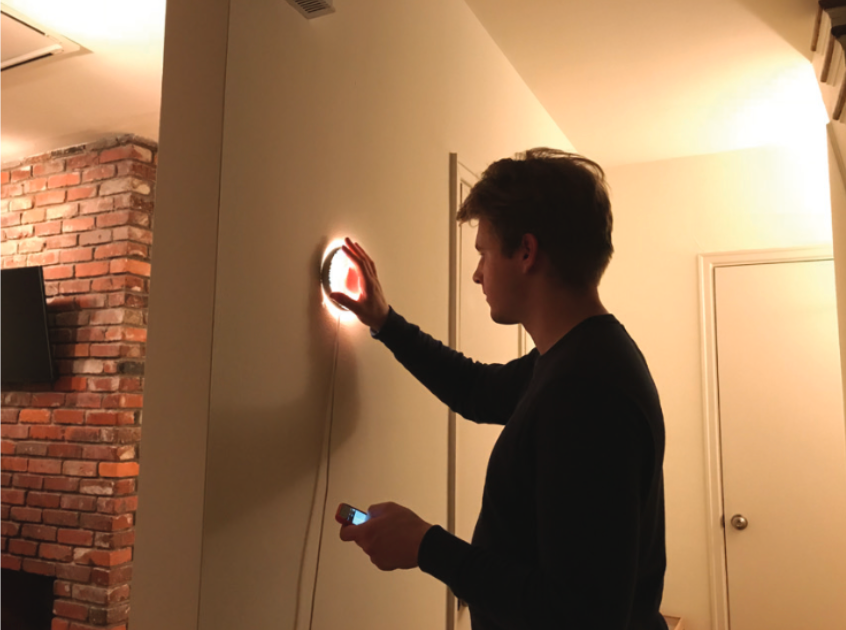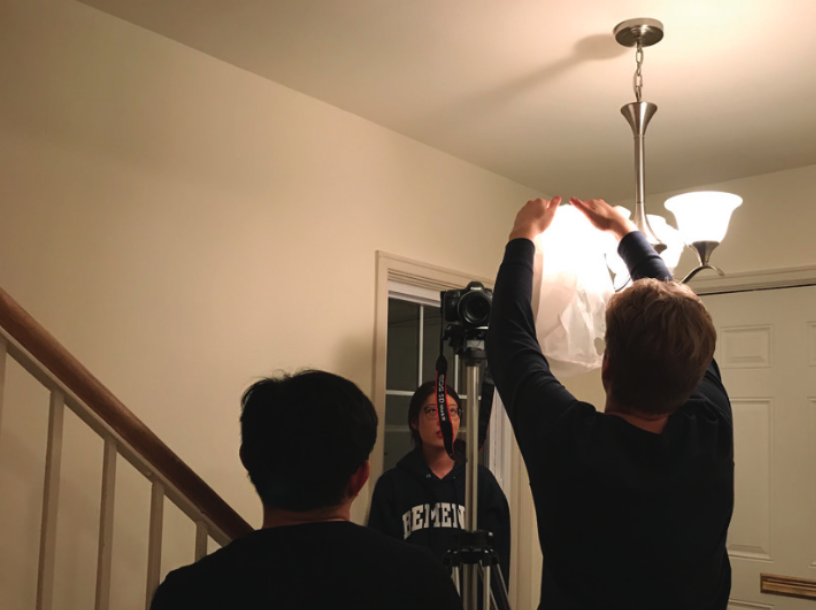As we were coming up with ideas for the hotel industry, we noticed that there were already innovative businesses bringing Alexa and other conversational agents into their hotel rooms. Competitive analysis and feature comparison of all the existing tools quickly helped us realize that we needed to pick an unexplored area if our work was to have any meaning. We decided to target a completely different segment of the hotel industry instead: Airbnb.
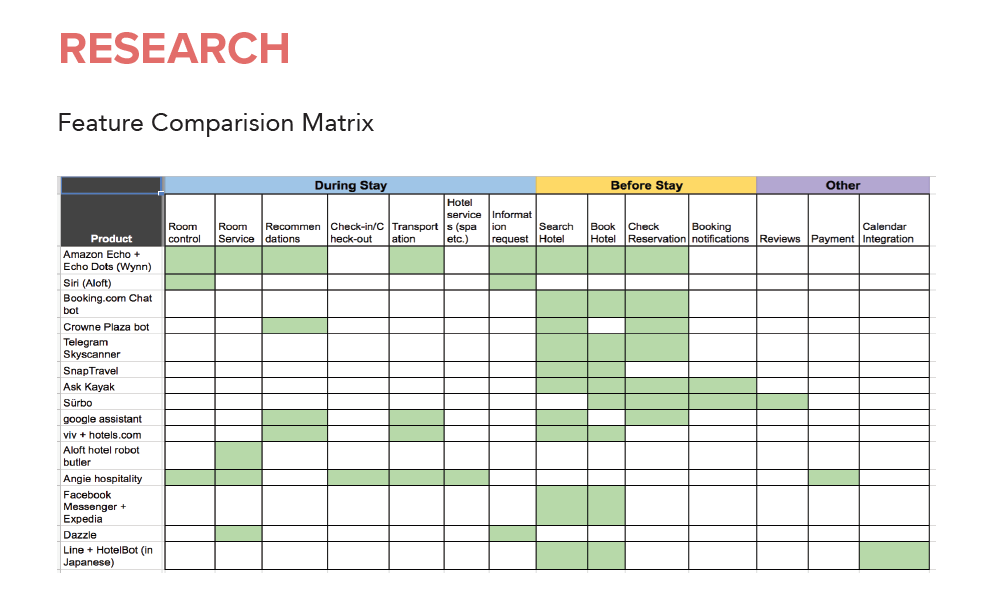
Our feature chart from competitive analysis.
Guerilla research helped us figured out if this direction is where we wanted to go. Our team went out and asked friends, family, and other students at Carnegie Mellon about their experiences with Airbnb. We also searched online on spaces like Quora, Reddit, and the Airbnb forums. We ended up conducting 10+ short interviews and scouring dozens of online comments. From this, we were able to confirm that there was a need for improvements to Airbnb's check-in system.
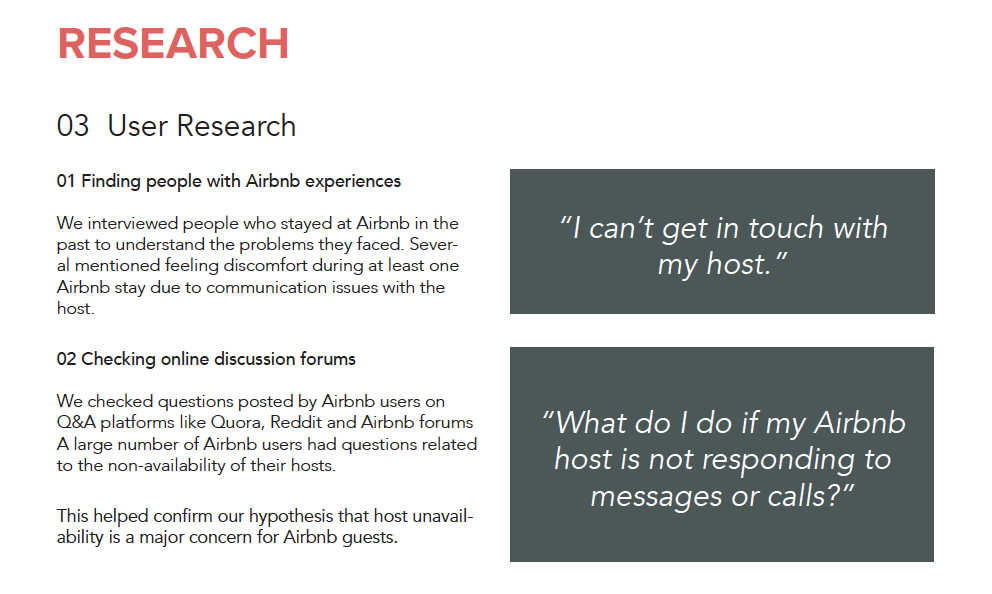
Two themes we identified revolved around anxiety regarding the guest-host relationship.
Ideation came next. We adopted the round robin technique because of the collaborative nature of the method: by building off each other's work, we could create a story that would capture our concept. Three ideas during the ideation phase emerged as concepts for our project.
We also used experience prototyping to help us decide which scenario felt more realistic as a context for a voice UI.
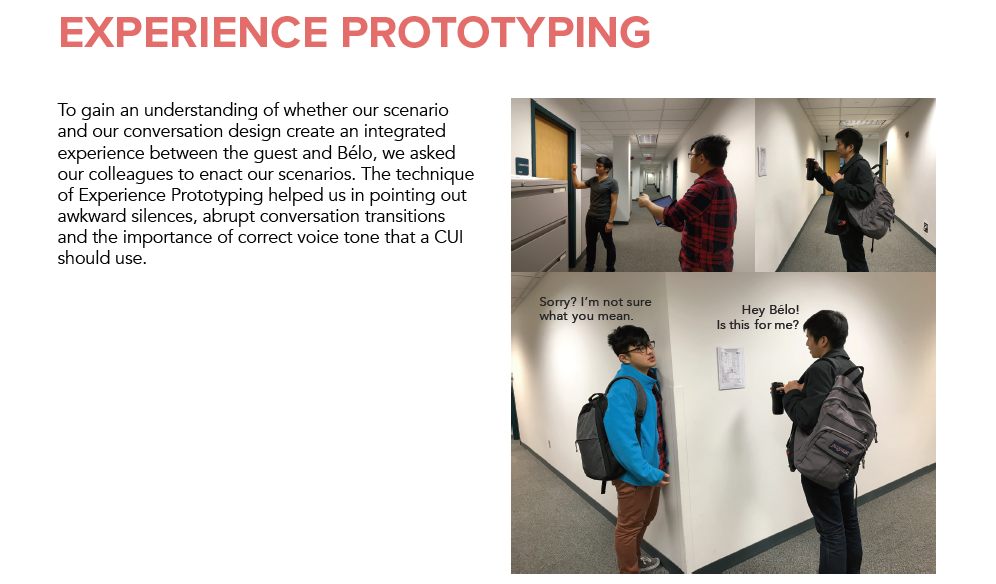
We borrowed classmates to act as guests so they could provide feedback during prototyping.
Our classmates provided positive and negative feedback that we analyzed thematically. The outcome of our ideation phase was the ultimate scenario that inspired our final video: a guide for guests that arrive when their host is unavailable.
Next, we fleshed out the UI's personality, a dialogue flow, and what the system states looked like. Personalities in voice UIs help users feel more natural talking to a machine, so we narrowed down on a warm, female voice out of a combination of attention to industry standards and resource availability. Dialogue flows helped us understand the range of possible responses Bélo can provide. We even integrated examples of error states to make sure our system could handle natural human speech.
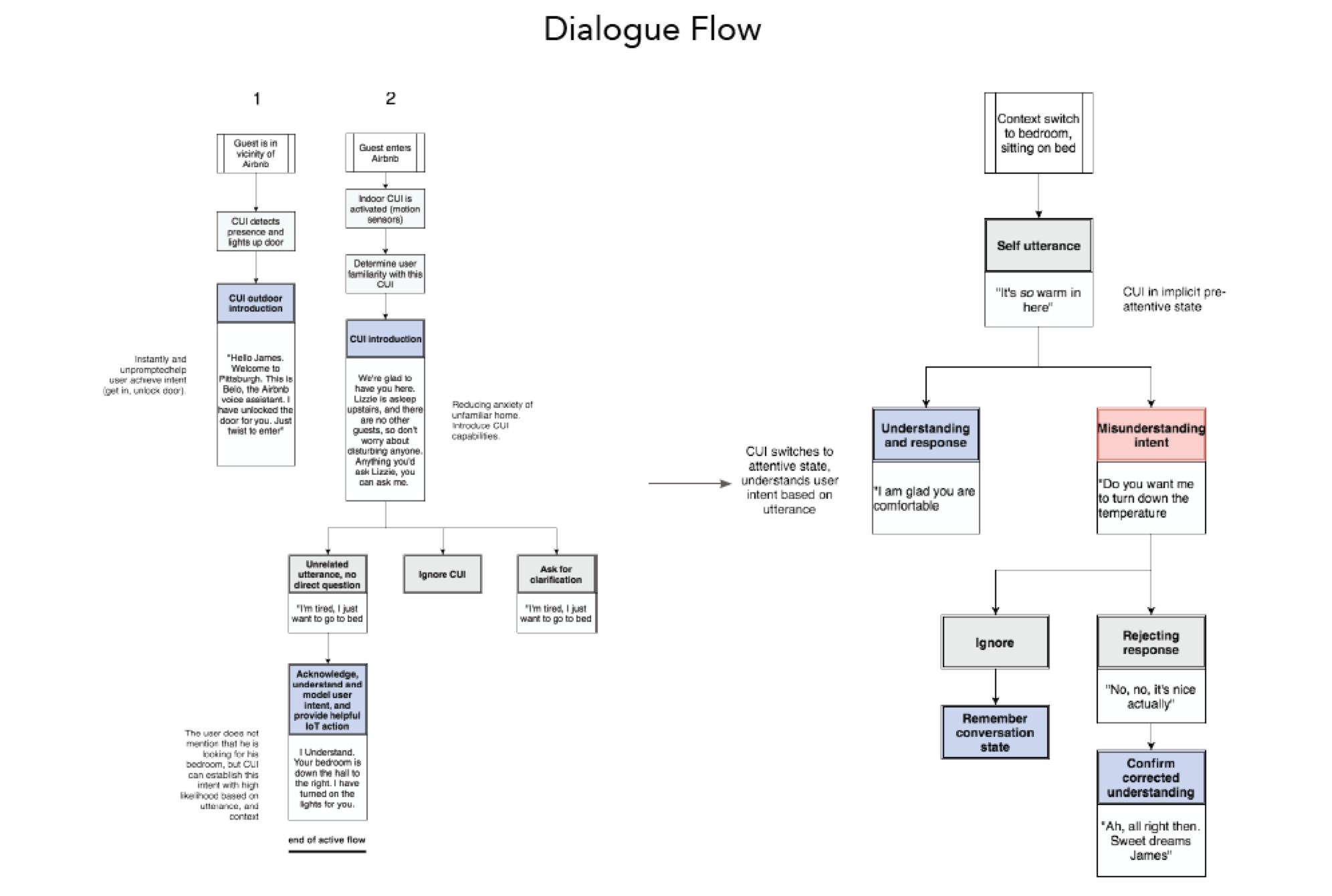
An example of two trees we constructed for dialogue flow.
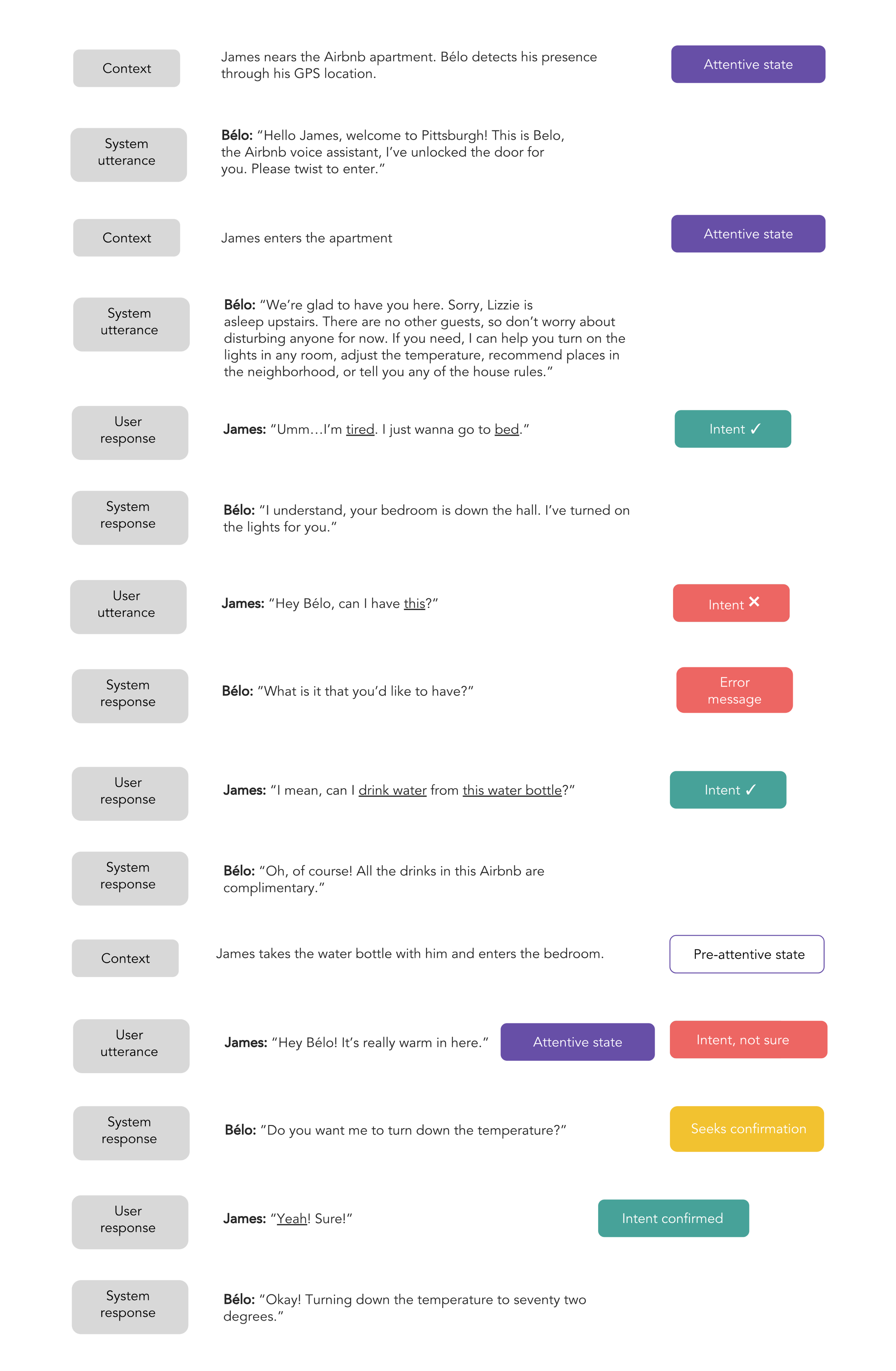
An excerpt from our preliminary work on modeling error messages.
Storyboard and script for a video featuring our new UI.
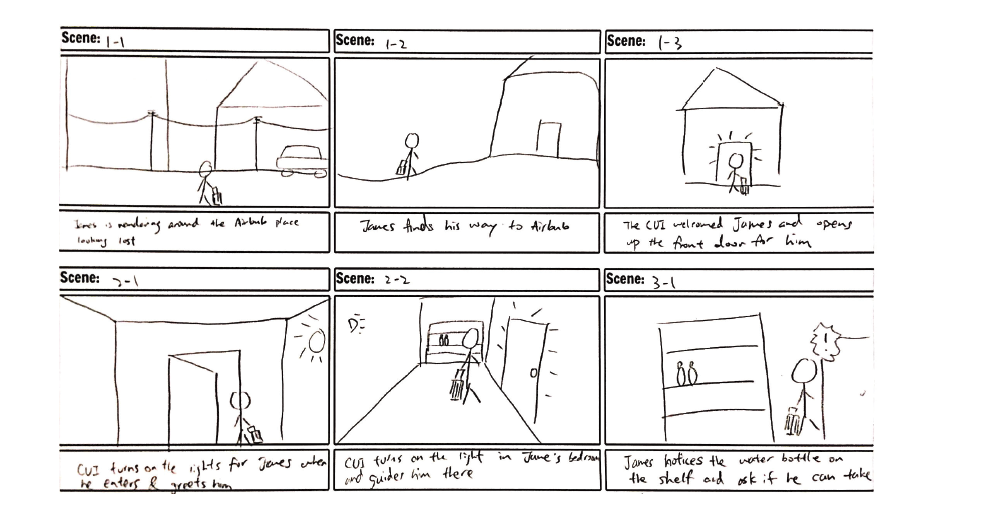
Sketching out the scenes gave us an idea of what we wanted to shoot.
As we ramped up production, we split roles in order to make the work distribution even. I took on some pre-production work, helping write the script to match our storyboard and prepare a props for the shoot.
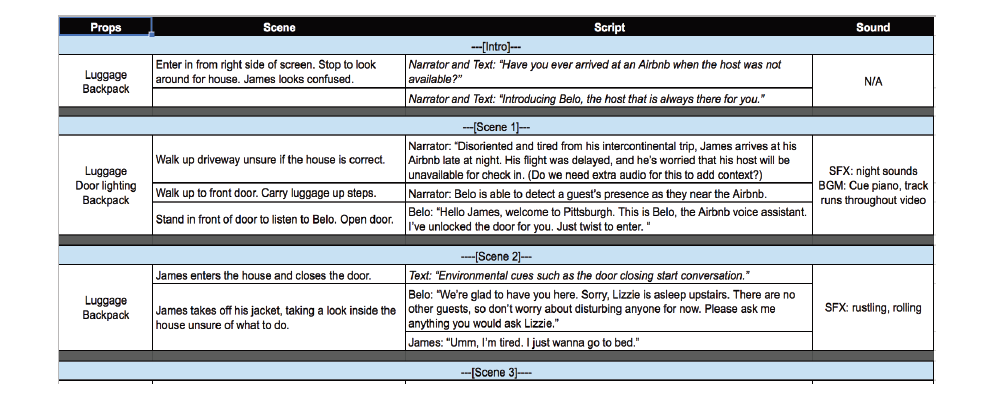
Our script written using Google sheets.
Finally, I helped out with filming, and handled the voice recording and editing. Voice recording was done in a studio on campus with editing done using Audacity.



